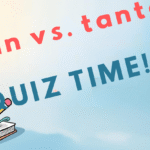Spanish Verb “Llegar” Conjugation Quiz: Master “To Arrive” in All Tenses
Mastering the Spanish verb llegar (to arrive) is essential for every Spanish learner. Whether you’re talking about arriving at a destination, reaching goals, or expressing time, this versatile verb appears in countless everyday conversations.
Our comprehensive llegar conjugation quiz helps you practice this crucial verb across all major tenses and moods. With three difficulty levels ranging from beginner (A1) to advanced (C1), you can progressively build your skills and confidence.
What makes “llegar” special?
- It’s a regular -ar verb in most conjugations
- Requires the preposition “a” when indicating arrival at specific places
- Used in common expressions like “llegar a ser” (to become) and “llegar a tiempo” (to arrive on time)
- Essential for discussing travel, schedules, achievements, and personal goals
Take our interactive quiz now to test your knowledge, receive immediate feedback, and master one of the most important verbs in the Spanish language. With detailed explanations for every answer, you’ll not only learn the correct conjugations but also understand the underlying grammar rules.
Pro Tip: Remember that “llegar” follows regular -ar verb patterns in most tenses, but watch for spelling changes in the preterite (llegué, llegaste, llegó) and present subjunctive (llegue, llegues, llegue) to maintain the hard “g” sound!
Ready to test your skills? Start the quiz below and see how well you know this essential Spanish verb!
Study Tip: Remember that “llegar” requires the preposition “a” when indicating arrival at a specific place (llegar a + place). It’s also used in expressions like “llegar a ser” (to become) and “llegar a tiempo” (to arrive on time).
Need to review “llegar”? Check out our complete “Llegar” guide



